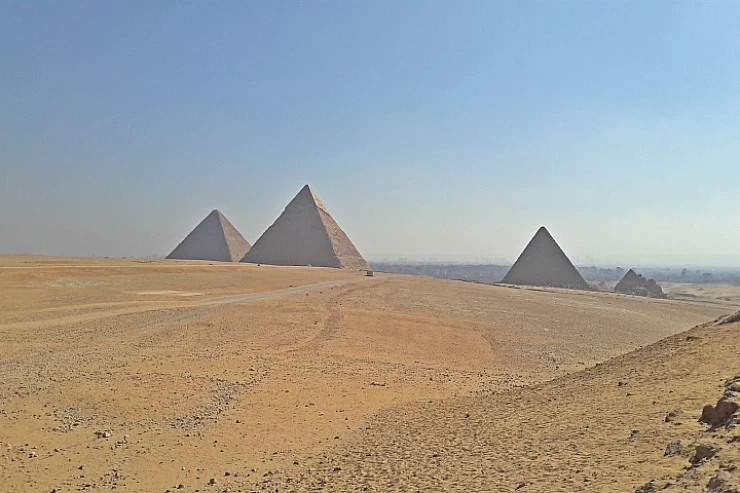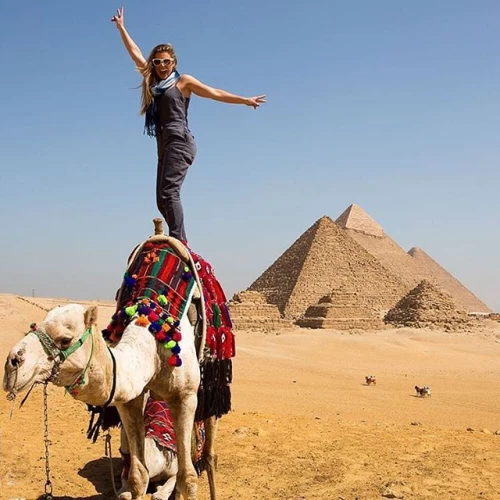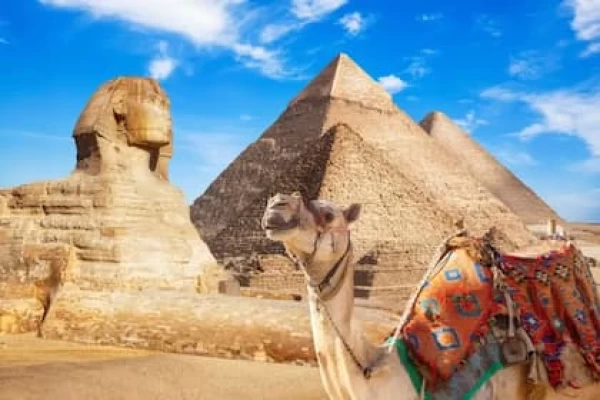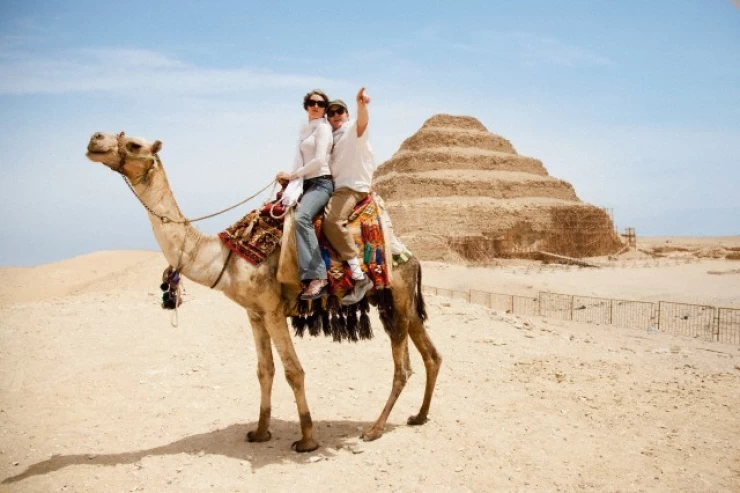
卡夫雷国王的历史
埃及文明是著名的古代文明,历史悠久。其起源可追溯到公元前 4000 年左右。它起源于非洲东北部的埃及,靠近尼罗河河岸。尼罗河谷肥沃而稳定的土地自古以来就是古今埃及人的主要象征。
胡夫法老生活在公元前 26 世纪,是第四王朝的第四位国王,在公元前 2575-2465 年间统治埃及。他继承了前任国王的遗志,阐明了尊崇太阳神拉的重要性,并自封为 “拉之子”。他从公元前 2558 年一直统治到公元前 2532 年,在此期间,他建造了吉萨二号金字塔等;请注意,这位国王有四个妻子。
哈夫勒登上埃及王位后,由于他与 Ddv-Ra 的子孙之间产生了内部纷争,他并没有放手一搏,但这并没有阻止他建造一座与胡夫金字塔同样宏伟壮观的金字塔的决心,尽管这座金字塔的规模略小,现在再看第二座金字塔,它比大金字塔更优雅,也更能保持它的辉煌。他恢复了吉萨的重要地位,恢复了统治家族其他成员的地位,或许还通过与他的兄弟、老太子卡瓦布的女儿结婚,确保了卡瓦布家族的忠诚。
他的统治持续了二十五年或更久,但遗憾的是,除了极少数情况外,我们对他统治期间的建设项目或军事行动知之甚少,我们只知道两件事: 我们只知道两件事:在他统治期间,一个新的王室头衔得到了确认;他统治时期留下的建筑和雕塑遗迹证明,在他统治的和平时期,艺术取得了长足的进步,不亚于他父亲和祖父的统治时期。
卡夫拉国王是铭刻在后代记忆中最著名的古代国王之一,因为他与祖先留下的重要遗迹有关,“卡夫拉 ”建造了吉萨的第二座金字塔。
卡夫拉在 “杰夫-拉 ”国王夺取政权后接管了政权,吉萨三大金字塔中的第二座金字塔并不是他留给我们的唯一考古奇迹,还有另一件珍宝,那就是用绿色闪长岩制作的国王雕像、 该雕像是国际博物馆中最著名的珍宝之一,因为它独一无二、美轮美奂、雕刻精准,古往今来,除了小件雕像外,没有人能以如此精准和巧妙的方式完成雕刻,甚至没有人能够以同样的精准度和创造力完成雕刻。
卡夫雷雕像由非常坚硬的绿色闪长岩制成,高 168 厘米,是在吉萨的卡夫雷国王山谷神庙中发现的,雕像现保存在埃及博物馆中,表现的是国王坐在宝座上,在他身后出现了以猎鹰形态出现的荷鲁斯神,以保护国王、 在这座雕像中,荷鲁斯代表着大地 “卡夫雷国王”,而荷鲁斯代表着天空 “猎鹰”,它们似乎是一枚硬币的两面,因为它们之间似乎是一种融合。
两者似乎是一枚硬币的两面,因为它们之间出现了永恒的凝聚力,而国王的右拳则握着一块兽皮,这是一种证实新生的神奇手段。
通过DeepL.com(免费版)翻译
King Chephren, son of Cheops:
He is the second reigning son of King Cheops, who returned to the Giza Necropolis to build the second biggest pyramid. You can view it fully from various angles during the tour of the Giza Pyramids; this gigantic structure is unfortunately overshadowed by the work of his father.
Even if the Pyramid of Khafra is smaller than the Great Pyramid of Khufu, it appears taller, as it was erected at a higher location. Originally, it had a height of 143.5 m (471 ft), and it still preserves some of its original casing stones on the tip of the pyramid, providing a view of how these pyramids would have appeared to the people of antiquity. This kingdom consists of a well-maintained Valley Temple, where amazing diorite statues of Khafra were found.
King Chephren of the fourth dynasty of the Old Kingdom in ancient Egypt ruled after his elder brother Djedefre, who built his pyramid in Abo Rawash apparently around 2570 B.C. He assumed power for more than twenty years (almost 26 years) and was succeeded by his son, the builder of the last pyramid in Giza, Mycerinus.
During the reign of Chephren, sculpture made significant progress, so although many of his statues have already been recycled in antiquity, we still have several images of this powerful and self-confident ruler. However, it is thanks to the face of the sphinx that Chephren is universally known. The Sphinx, with its lion body and man's head, which was supposed to depict the symbols of royalty and the sun, was carved into the living rock to stand guard along the ramp leading to the pyramid of Khafre; he was known to be a firm ruler. He closed down many of the temples in Egypt, following the trend started by his father, King Cheops.
The pyramid of Chephren was destined to be the last of the great pyramids. His son and heir, Mycerinus, was satisfied with a decidedly less imposing construction; his pyramid is about a tenth of that of his grandfather and is only 66 meters high. Without worrying about how to understand the key terms of Egyptian history, we will see an Egyptologist guide, who will meet your expectations.


















